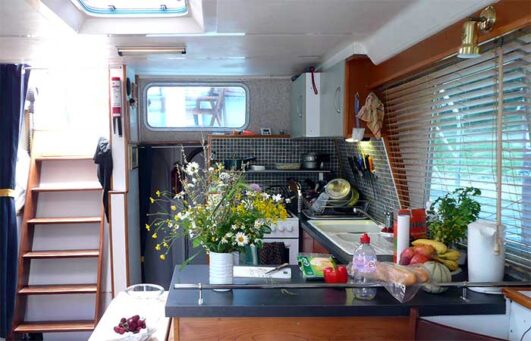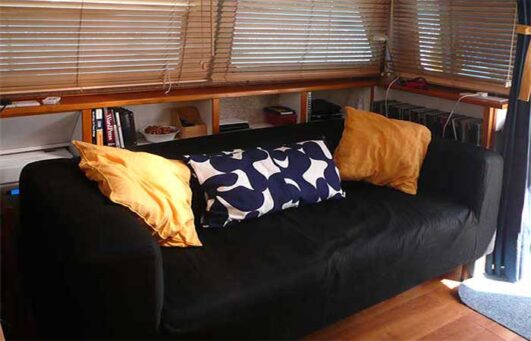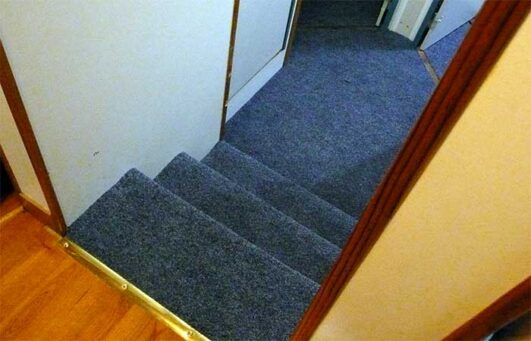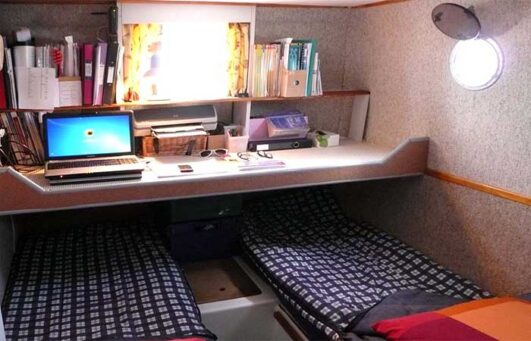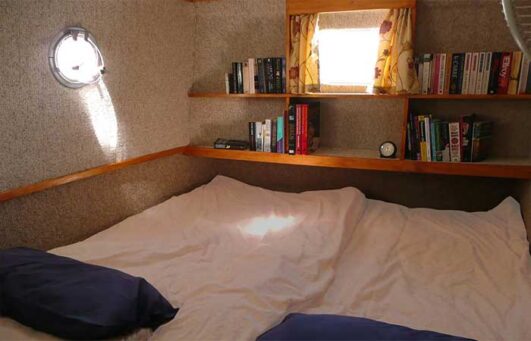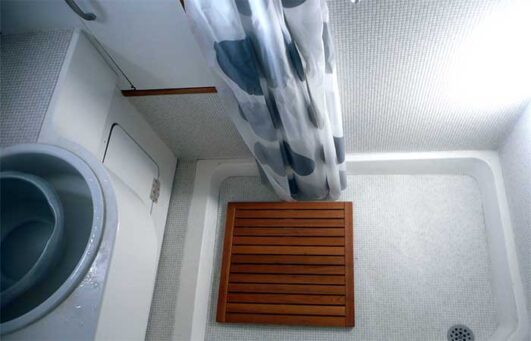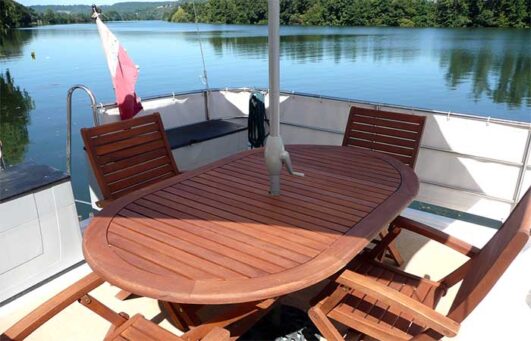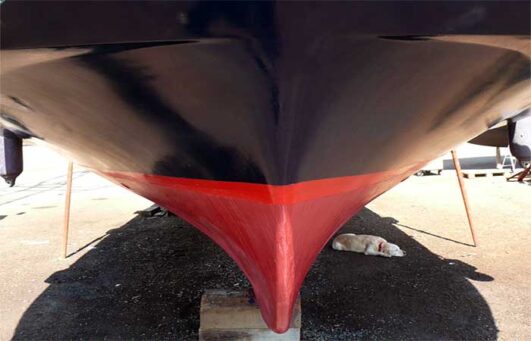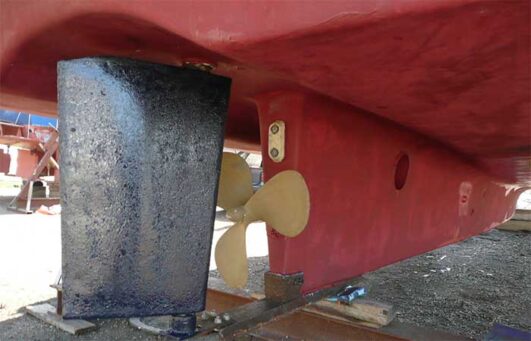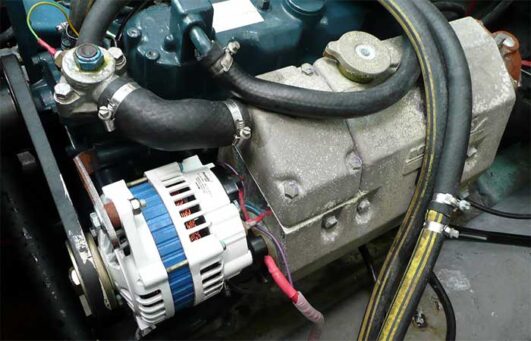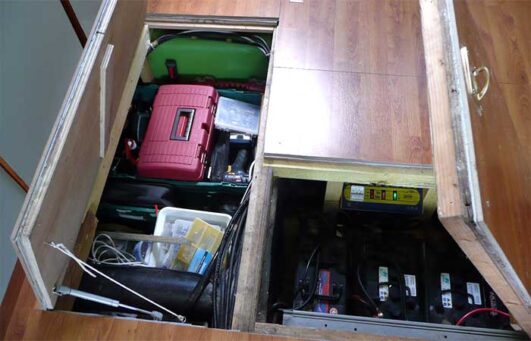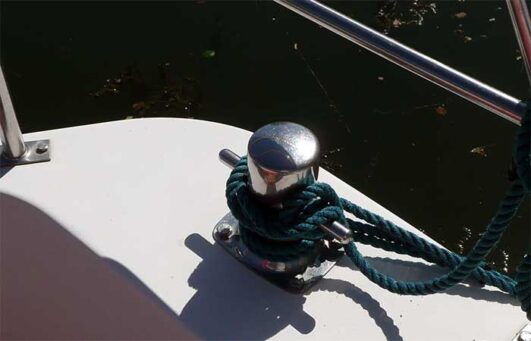see also: | ex Hire Fleet boats | Private sellers | New boats |
Buy a Boat
Buy a boat and look forward to many happy hours, days, weeks and years ahead exploring beautiful inland waterways and enjoying the boating life.
First Thoughts
As you start your search make sure that you know what size you need. How many people will use it together? Will you want to sleep aboard? If so, how many cabins will you need?
Then, have a thought for where you will use it, and keep it. It needs to be accessible if you are going to use it often. Check out marinas and mooring spots for cost and safety, and if you’re going on long trips, around France perhaps, think about draft and height, as well as length and width. Smaller waterways can be quite shallow and are criss-crossed with low bridges.
Budgeting and the Asking Price
You may already have an idea of prices and have your finances in place already. Either way, decide on your budget and stick to it – there are literally thousands of boats for sale and you’ll be able to find the one you’re looking for with a little patience and some good advice.
The waterway magazine publisher Fluvial has a very useful interactive guide that matches boat details from its comprehensive database against prices asked by advertisers [in French].
Talking to as many boat owners as you can, as well as brokers, always pays off and will help you weigh up the pros and cons of new versus pre-owned, as well as type, construction and layout.
TIP : If you buy through our partner Boatshed, they have a tried and tested sequence of Preparation and Research, Viewings, Offer, Contract and Deposit, Survey and Ownership. Check out our detailed information.
Assuming that you have addressed all of the preliminaries above, and that you’re looking at the second-hand market and may already have your eye on one or two, here is your checklist – what to watch out for:
1. How does it look in the photos? Cared for?
If you are a newbie to boating then limit your short list to those that look good. A boat that looks in poor condition in a photo is likely to be the same, or worse, in the flesh. You won’t want to start your adventure with endless work and repairs. Note how old the boat is and how long it’s been on the market.
2. Go and see it
Look all round for signs of damage: scrapes and dents may be superficial or signs of something more serious that needs investigation. Discolouration of the surface coat can be a sign of previous damage that has been dealt with. Blisters in a gel coat can be signs of osmosis, caused by water seeping into the gel coat over time and reacting with the glass fibre of the shell. The bubbling may indeed be superficial but if it’s more serious it can compromise the structure and safety of the boat. If the boat is out of the water ‘on the hard’, check the condition of hull, the anodes and for nicks or other damage to the propeller blades. Many faults of this nature are fixable but if the hull and the deck superstructure appear to be coming adrift, move on.
3. Get inside
Does it feel damp and smell musty? Check for signs of leaks anyway – blackened wood, warped floorboards, staining on the ceilings or fabrics all tell a story that needs investigation. Do the heads smell? Check the condition of the hoses and connections.
Lift the floorboards and check out the bilges – much oily water? A tide-mark will tell you what’s happened previously in the boat’s life.
4. The Engine
Give this the same attention as you would when buying a car. In advance of your visit, ask to see the service records. Check that the engine itself is not looking rusty (this could mean that it’s actually been immersed in water in the past) and that the mounts are still sound. Check that the dipstick oil is not milky and that the hoses and belts are not cracked or worn.
5. Electrical connections
Take a good look at the electrical wiring. All boat owners love gadgets and electrical systems can easily get overloaded. Check all the connections are safe: worn, loose wiring can cause electrolysis, corrosion and boat fires. A complete rewire is expensive.
7. Gas and appliances
Check the age and installation certificates of appliances, bottles and lockers
8. Fixtures and fittings
Check which items will be sold with the boat: ropes and lines, fenders, boathook, fire extinguishers and so on. What condition are they in? Will they need replacing?
9. Legalities
Check ownership and purchase documentation. The vendor must be able to show you the title deed and also that VAT has been paid.
10. Surveyor
If you’re happy with what you’ve seen it’s a good idea to have a professional survey conducted to support your view and give you confidence in your purchase. It will also give you an idea of the cost of fixing things that need doing – these are all price negotiating points.

